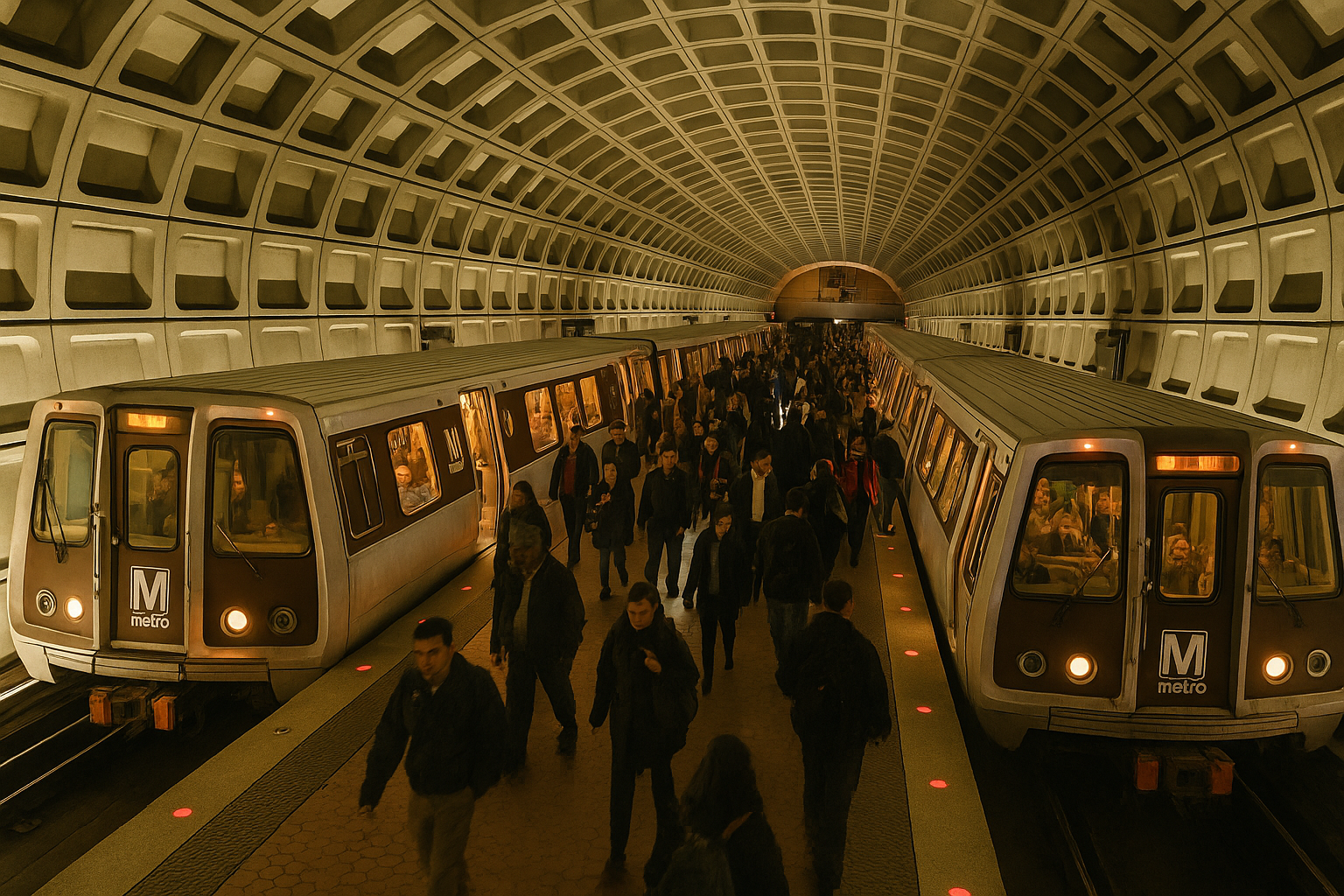Exploring the Washington Metro: Serving D.C.
Published: June 30, 2025
By: Adam Burns
The Washington Metro, colloquially known as the “Metro,” is the public transit system serving the Washington, D.C. metropolitan area. As one of the busiest and most significant subway systems in the United States, the Metro plays a crucial role in the daily lives of countless residents and commuters.
Since its inception, the Metro has been a model of urban transit, pioneering design, and enduring service challenges, while continuing to adapt to the changing needs of the nation's capital. This article delves into the history, structure, operations, and impact of the Washington Metro, providing a comprehensive overview for transit enthusiasts and everyday riders alike.
A Brief History
The origins of the Washington Metro date back to the mid-20th century, a period marked by rapid urbanization and increasing congestion in American cities. In response to these challenges, the National Capital Transportation Agency was established in 1960, with a mission to create a viable public transit solution for the Washington, D.C. area. After extensive planning and negotiations, the Washington Metropolitan Area Transit Authority (WMATA) was founded in 1967, tasked with constructing and operating the Metro system.
The Metro officially opened on March 27, 1976, with the launch of a single line known as the Red Line. Over the following decades, the system expanded significantly, incorporating multiple lines and extending service to suburban regions. This expansion was strategically designed to connect residential areas with commercial, governmental, and cultural hubs, thereby facilitating efficient urban mobility.
Structure and Operations
Today, the Washington Metro encompasses six lines distinguished by colors: Red, Orange, Blue, Green, Yellow, and Silver. These lines collectively span over 200 kilometers (approximately 124 miles) of track and serve 91 stations. The system’s design is both functional and aesthetic, featuring distinctive architectural elements such as vaulted ceilings, modernist design language, and robust safety features.
The operational framework of the Washington Metro integrates a blend of automated and manual controls, ensuring both efficiency and safety. Trains typically run from early morning until midnight on weekdays, with extended hours on weekends to accommodate events and nightlife. The integration of smart technology, such as SmarTrip cards, streamlines fare collection and provides riders with a convenient, contactless payment option.
Challenges and Developments
Throughout its history, the Washington Metro has faced a variety of challenges, from budgetary constraints to aging infrastructure and safety concerns. These issues have occasionally led to service disruptions and a decline in ridership. However, WMATA has consistently endeavored to address these challenges with comprehensive maintenance plans, strategic investments, and modernization initiatives.
A notable development in recent years has been the emphasis on enhancing accessibility and sustainability. The Metro has prioritized upgrading station facilities to meet ADA standards, ensuring that all passengers, regardless of mobility, can access the system with ease. Additionally, the integration of energy-efficient technologies, such as LED lighting and regenerative braking, underscores the Metro’s commitment to reducing its environmental footprint.
Impact on the Washington, D.C. Area
The Washington Metro’s impact on the D.C. metropolitan area is profound. As a critical artery of urban mobility, the Metro facilitates economic activity by connecting businesses, governmental institutions, and cultural landmarks. It also plays an essential role in reducing traffic congestion and mitigating the environmental impact of commuting, by encouraging public transit use over personal vehicles.
The Metro’s influence extends beyond transportation. It has been a catalyst for urban development, shaping land use patterns and driving investment in transit-oriented developments. Communities near Metro stations have experienced increased property values, enhanced walkability, and improved access to amenities and services.
Future Prospects
Looking forward, WMATA has ambitious plans to further enhance the Washington Metro’s reliability, capacity, and reach. These plans include expanding existing lines, constructing new stations, and incorporating cutting-edge technologies to improve service quality. A key focus area is the adoption of next-generation train control systems, which are intended to increase train frequency and reduce delays.
Moreover, WMATA is engaging in concerted efforts to revitalize ridership post-pandemic. Initiatives such as fare discounts, marketing campaigns, and enhanced cleaning protocols are designed to reassure passengers and attract new users to the system. The authority is also exploring partnerships with local governments and private developers to further integrate the Metro into the metropolitan area’s broader transportation network.
The Washington Metro stands as a testament to the transformative power of public transit in metropolitan regions. Despite the myriad challenges it has faced over the years, the Metro remains an indispensable component of the Washington, D.C. area's infrastructure. Its continued success is vital for the economic vitality, environmental sustainability, and social cohesion of the region.
As the Metro evolves to meet the demands of the 21st century, it is poised to remain at the forefront of urban transit innovation. Through strategic investments and a commitment to service excellence, the Washington Metro is not just a conduit of mobility but also a symbol of the dynamic interplay between urban development and public transportation. For residents and visitors alike, it offers an efficient, reliable, and sustainable means of navigating the nation's capital.

